Can a car be too good? The Audi RS 4 Avant is one of the best performance car all-rounders you can buy, offering a blend of incredible pace, strong grip and excellent practicality. A series of subtle updates for 2020 means it’s better than ever.
It’s better to drive than a performance SUV, nicer to look at and surprisingly fuel-efficient. However, buyers looking for driver involvement and character might need to look elsewhere.
About the Audi RS4 Avant
The RS 4 Avant is one of the defining estate cars of the past 20 years. Few cars offer such a compelling blend of muscular styling, thunderous pace, tremendous all-weather grip and family-friendly practicality.
While RS 4 models of old were powered by a naturally aspirated V8, this latest version features a 2.9-litre twin-turbocharged V6 producing 444bhp and 600Nm of torque. The downsizing means it can deliver 30.7mpg, while offering the kind of performance you’d expect from an Audi wearing an RS badge.
- SEE MORE Best estate cars to buy 2021
It’ll hit 62mph in just 4.1 seconds, going on to reach a top speed of 174mph with the limiter removed. Thanks to quattro four-wheel drive, this pace and performance are available in all weathers, making it devastatingly quick in a straight line.
An update in 2020 included a subtle facelift and the introduction of a new 10.1-inch touchscreen infotainment system. This is combined with a 12.3-inch Virtual Cockpit to ensure the RS 4 Avant has the tech to go with the beautifully finished interior.
Thanks to a large boot, space for four adults and a long list of standard equipment, the RS 4 Avant is an ideal family car. That’s if you can live with the £65,000 price tag and the high running costs.
If anything, this Audi is almost too efficient and competent for its own good. The Mercedes-AMG C 63 Estate is more playful, while the Alfa Romeo Giulia Quadrifoglio is more fun, assuming you don’t need the practicality of an estate.
All 444bhp and 600Nm of torque flows to the quattro four-wheel-drive system via an eight-speed Tiptronic transmission. In normal driving, 60% of the torque is directed to the rear axle, with 40% going to the front. If required, 70% of the power can be sent to the front or up to 85% to the rear.
This is an extraordinarily capable estate car. The four-wheel-drive system delivers staggering traction, while the steel brake discs (375mm front, 330mm rear) cut the speed at an astonishing rate. Optional carbon-ceramic brake discs shave 8kg of unsprung mass but add an eye-watering £6,000 to the price.
Electro-mechanical power steering is fitted as standard, but the optional dynamic steering varies the steering ratio by up to 100%, with more weight when you’re driving fast, but increased assistance when you’re in town. Optional adaptive dampers allow you to control the rate of the suspension response.
Floor the throttle when exiting a tight bend and the tail slides slightly, but the balance remains very neutral. There’s an overriding sense that the RS 4 Avant has been set up to deliver its thunderous performance in the most crushingly efficient way. It’s also surprisingly comfortable, especially on models fitted with adaptive dampers (standard on the Vorsprung model).
This means it’s not as playful as a Mercedes-Benz C 63 Estate or an Alfa Romeo Giulia Quadrifoglio. There’s a sense that the RS 4 Avant driver will be the first to arrive at the party, but the Mercedes and Alfa Romeo drivers will be wearing the biggest smiles.
- SEE MORE Best luxury SUVs 2021
Engines, 0-60 acceleration and top speed
The RS 4 Avant will sprint to 62mph in just 4.1 seconds, with the quattro 4WD system ensuring that rapid starts are possible in most conditions. Top speed is limited to 155mph, although the optional RS dynamic package (standard on the Vorsprung model) increases this to 174mph.
While some may mourn the passing of the old V8 engine, the 2.9-litre twin-turbocharged V6 has the edge over its predecessor when it comes to fuel economy. In the latest WLTP driving cycle, it can return 30.7mpg on a combined cycle, which represents a 17% improvement over the old model.
Not that the RS 4 Avant will be cheap to run. Prices for the updated car start at £65,000, and that’s before you’ve looked at the options list. The Carbon Black model adds £7,000 to the price, while the flagship Vorsprung model is closer to £85,000.
The purchase price and CO2 emissions of 211g/km combine to deliver a steep tax bill. Vehicle Excise Duty (VED) is £1,305 in the first year, followed by five years of £475. After that, the rate drops to the standard £150 a year.
Insurance groups
Given the performance on offer, not to mention the expensive components, an insurance group rating of 44 is pretty reasonable. That said, premiums will be expensive, while the keyless entry system makes the RS 4 Avant vulnerable to thieves.
Depreciation
The RS 4 Avant is expected to retain 58% of its value after three years. In comparison, the Mercedes-AMG C 63 Estate retains just 43-46% of its value over the same period.
The RS 4 Avant was given a subtle makeover for 2020, with a redesign of the standard-fit Matrix LED headlights and a new frameless grille. It’s a far cleaner look than before, but there’s no mistaking the RS 4 Avant from the regular A4 Avant.
The wheel arches are 30mm wider than the A4 at the front and back, with gloss black elements positioned next to the headlights to further emphasise the width. At the back, the RS-specific roof spoiler, diffuser insert and chrome tailpipes of the RS exhaust system complete the cosmetic overhaul. Deleting the RS badges is an option if you fancy a more understated appearance.
- SEE MORE Best 4x4s to buy 2021
A set of 19-inch, 10-spoke alloy wheels are fitted as standard, but Carbon Black and Vorsprung models get 20-inch, five-spoke wheels. As the name suggests, the Carbon Black model receives the kind cosmetic overhaul Batman would approve of.
Step over the illuminated door sills and you’ll find a pair of RS Super Sport heated front seats in Nappa leather with contrasting honeycomb stitching. They look superb, but more importantly, they lock you in place on a spirited drive.
Quality is extremely good, with a neat and clean design that’s feature-packed and incredibly upmarket. The aluminium shift paddles behind the steering wheel are far more tactile than they were before.
Sat-nav, stereo and infotainment
The RS 4 Avant now comes with a 10.1-inch infotainment display which replaces the old 8.3-inch unit. It sits on top of the dashboard, with the old car’s rotary dial ditched in favour of a touchscreen. Sat-nav, Apple CarPlay and Android Auto come as standard.
The 12.3-inch Virtual Cockpit instrument panel gets a so-called ‘RS Monitor’. This provides real-time updates on the car’s performance, with G-force readings, tyre temperatures and lap times.
The RS 4 Avant remains as practical as the regular Audi A4 Avant, so it’s ideal for anyone in need of a spacious performance car. The rear bench splits three ways, which is handy if you need to carry a long load but still require the use of at least one of the back seats.
Size
The RS 4 Avant is 4,781mm long and 2,022mm wide including the door mirrors. This means it’s slightly longer than the regular A4 Avant, while the lowered suspension drops the height to 1,404mm.
Leg room, head room & passenger space
Space in the front is excellent, with the driver and passenger treated to a pair of racing-styling bucket seats. Four adults can travel in the RS 4 Avant in comfort, with ample headroom throughout the cabin. The sports seats mean there’s less legroom in the back than in a regular A4 Avant, while the middle seat is obstructed by the transmission tunnel.
Boot
The 495-litre boot puts the Audi RS 4 Avant slightly ahead of the Mercedes-AMG C 63 Estate for luggage capacity, but it’s worth noting that a new BMW M3 Touring is waiting in the wings. Folding the Avant’s rear seats increases the boot space to 1,495 litres.
The tailgate and luggage compartment cover are electrically operated as standard, while a sensor for opening and closing the boot is available as an option.
The Audi A4 didn’t feature in our 2020 Driver Power customer satisfaction survey, but it was rated below average in 2019. More than a fifth (22%) of owners reported a problem in the first year of ownership, with electrics the biggest issue. That said, Audi has a good reputation for reliability and the RS 4 engine has seen service in the RS 5.
Although the RS 4 Avant won’t be tested separately, the Audi A4 received a five-star safety rating from Euro NCAP in 2015. The individual scores were 89% and 87% for adult and child occupant protection, 75% for pedestrian safety (now vulnerable user protection), and 75% for safety assist technologies.
Standard safety equipment includes six airbags, a pop-up bonnet for pedestrian protection, pre-sense city braking, cruise control with speed limiter, multi-collision brake assist, Audi side assist, plus front and rear parking sensors. The £1,250 Driver Assistance Pack comprises adaptive cruise control, traffic sign recognition, collision avoidance assistant, lane-keeping assistance and automatic braking at speeds of up to 155mph.
Warranty
The RS 4 Avant is covered by a three-year/60,000-mile warranty. Four- and five-year warranties are available.
Servicing
There are two types of servicing schedules available for the RS 4 Avant. If you travel less than 10,000 miles a year, the car should be serviced every year or 9,300 miles. If you drive up to 19,000 miles a year, the car can be serviced every two years. This is ideal for drivers who spend most of their time on motorways and main roads.
from Sitewide RSS feed https://bit.ly/3s7axfg
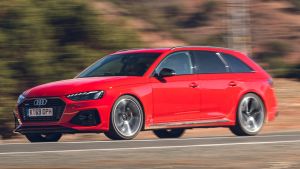


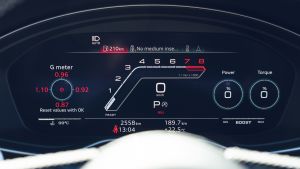


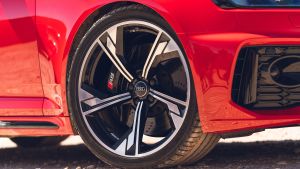
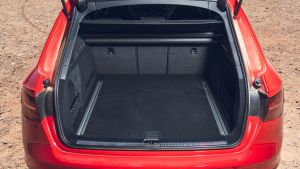

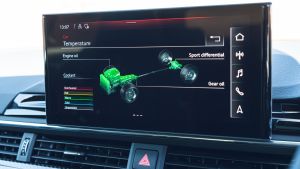
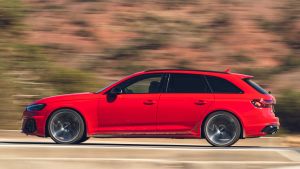


Comments
Post a Comment